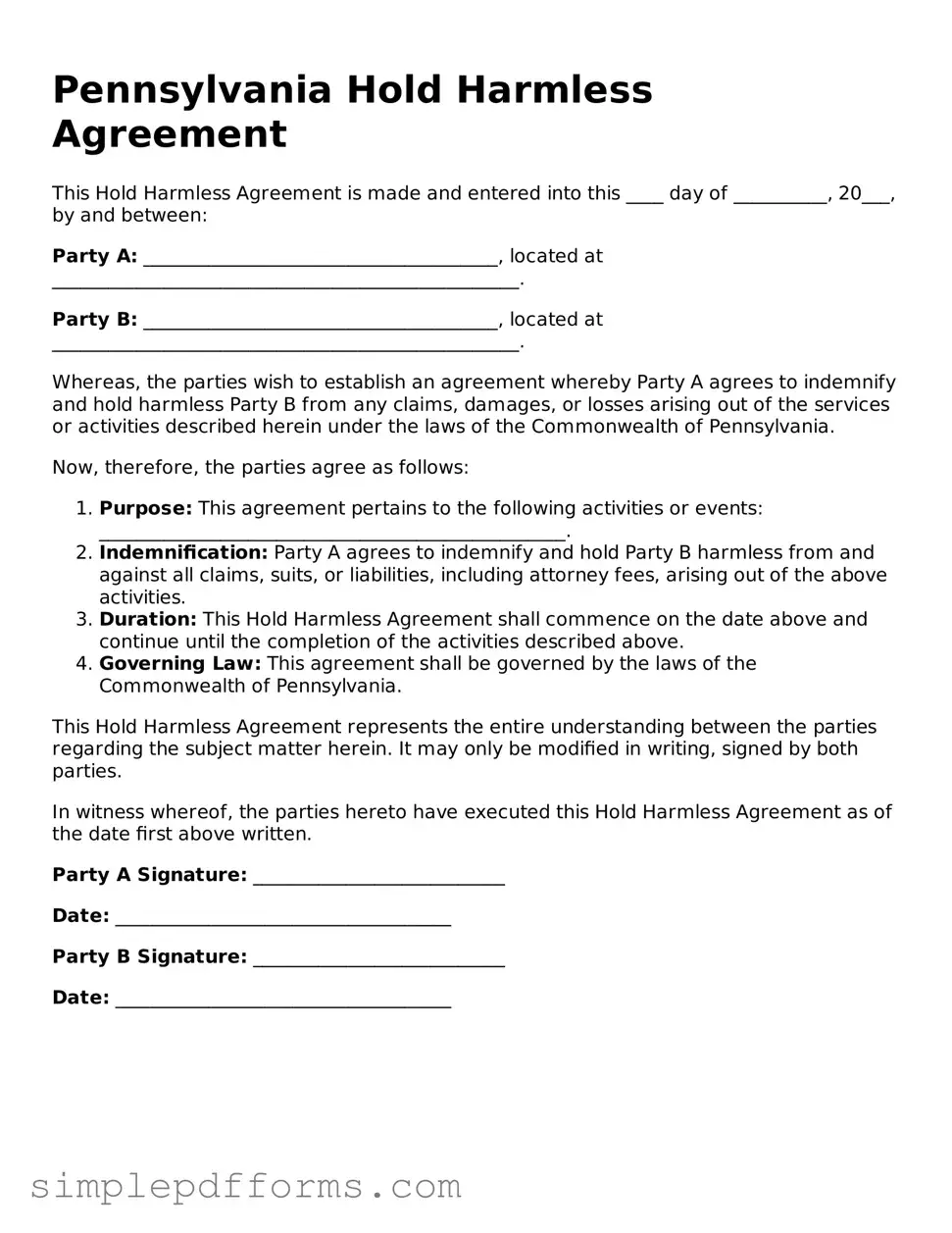Pennsylvania Hold Harmless Agreement
This Hold Harmless Agreement is made and entered into this ____ day of __________, 20___, by and between:
Party A: ______________________________________, located at __________________________________________________.
Party B: ______________________________________, located at __________________________________________________.
Whereas, the parties wish to establish an agreement whereby Party A agrees to indemnify and hold harmless Party B from any claims, damages, or losses arising out of the services or activities described herein under the laws of the Commonwealth of Pennsylvania.
Now, therefore, the parties agree as follows:
- Purpose: This agreement pertains to the following activities or events: __________________________________________________.
- Indemnification: Party A agrees to indemnify and hold Party B harmless from and against all claims, suits, or liabilities, including attorney fees, arising out of the above activities.
- Duration: This Hold Harmless Agreement shall commence on the date above and continue until the completion of the activities described above.
- Governing Law: This agreement shall be governed by the laws of the Commonwealth of Pennsylvania.
This Hold Harmless Agreement represents the entire understanding between the parties regarding the subject matter herein. It may only be modified in writing, signed by both parties.
In witness whereof, the parties hereto have executed this Hold Harmless Agreement as of the date first above written.
Party A Signature: ___________________________
Date: ____________________________________
Party B Signature: ___________________________
Date: ____________________________________
